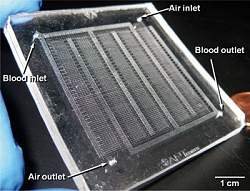Papel importante
Cientistas descobriram um modo de ação inesperado para o alum, um adjuvante de vacinas.
Adjuvantes são substâncias farmacologicamente inativas usadas como veículo para o princípio ativo.
O alum, um sal de alumínio, é atualmente, de longe, o adjuvante mais utilizado em vacinas.
Mas Christophe Desmet (Universidade de Liège, Bélgica) e Ken Ishii (Universidade de Osaka, Japão) acabam de descobrir que a substância não é assim tão "inativa" quanto se acreditava.
Uma mãozinha do DNA
De fato, parece que, quando uma vacina contendo o alum é injetada no paciente, o contato com o adjuvante faz com que certas células do corpo liberem seu próprio DNA.
A presença desse DNA fora das células, um lugar onde ele não deveria estar em condições normais, age como um estimulante dosistema imunológico, aumentando fortemente a resposta à vacina.
Dezenas de milhões de doses do adjuvante alum são administradas a cada ano, e cada pessoa provavelmente já recebeu a substância pelo menos uma vez em sua vida.
Mas ninguém até hoje conhecia esse seu mecanismo de ação.
O trabalho foi publicado nesta semana na revista Nature Medicine.
Adjuvantes de vacinas
O alum foi desenvolvido de uma forma relativamente empírica.
Até agora simplesmente não se conhecia esse seu papel de auxílio ao sistema imunológico para responder às vacinas.
A descoberta dos pesquisadores belgas e japoneses, portanto, vai permitir uma melhor compreensão do porquê e de como as vacinas atuais funcionam e da sua capacidade de imunização.
Isso deverá ainda ajudar no desenvolvimento de novos adjuvantes para vacinas no futuro, já projetados sabendo-se que eles não são meros coadjuvantes.
Os mecanismos de resposta ao DNA, agora revelados, poderão também permitir o desenvolvimento de novos adjuvantes com atividade extremamente específica e eficaz.
A importância das vacinas
As vacinas constituem uma das armas mais eficazes da medicina moderna para evitar o surgimento de doenças infecciosas graves, como poliomielite, hepatite B, difteria e tétano.
A vacinação já permitiu a erradicação completa da varíola, responsável por dezenas de milhões de mortes.
E hoje há grandes esperanças na criação de vacinas contra outros grandes flagelos da humanidade, como a malária, o vírus da AIDS, e mesmo determinados tipos de câncer.
Esses avanços vão exigir progressos importantes em várias áreas, nomeadamente no profundo entendimento dos mecanismos da vacinação.
Por que as vacinas precisam de adjuvantes?
Uma vacina é um preparado que contém uma forma morta ou enfraquecida, ou determinados componentes, ou ainda um substituto sintético do agente infeccioso (vírus ou bactérias) responsável por uma doença.
Estimulando nosso sistema imunológico com esse "falso ataque", a vacina o prepara para se defender do agente infeccioso real.
Algumas preparações de agentes infecciosos são completadas por um adjuvante, por exemplo, se o composto por si só não consegue estimular suficientemente o sistema imunológico.
Os adjuvantes também aumentam o rendimento do antígeno, permitindo que sejam produzidas mais doses de vacinas com a mesma massa antigênica, e aumentam o período de contato do antígeno - a substância ativa da vacina - com o sistema imunológico.





